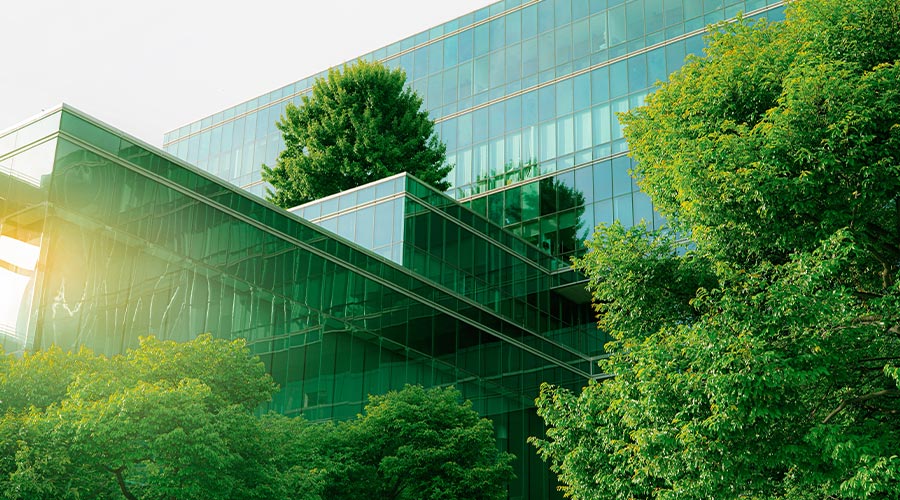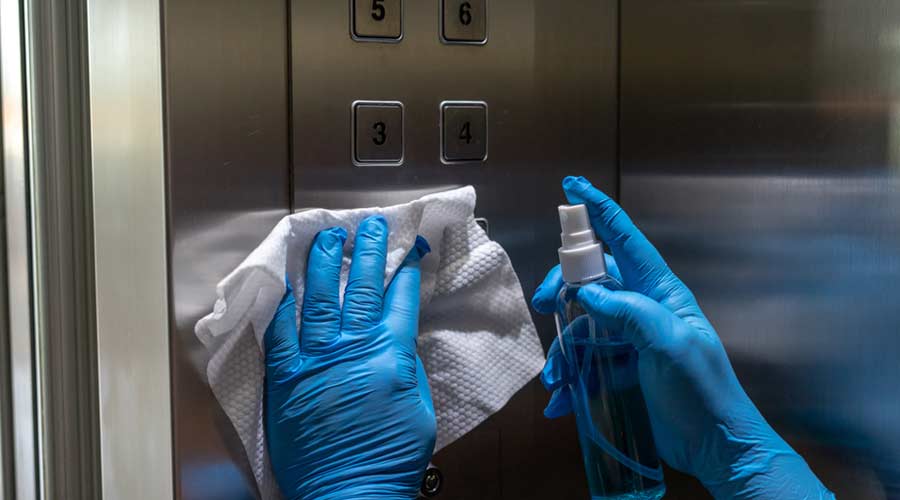
This year, the U.S. Green Building Council (USGBC) released version 5 (v5) of its Leadership in Energy and Environmental Design (LEED) standard, a certification program that recognizes buildings for prioritizing sustainability and environmental health. This latest iteration includes significant cleaning-related updates that distributors will need to familiarize themselves with in order to better serve clients supporting or pursuing LEED certification.
According to Larissa Oaks, associate director, LEED technical team, the newest version of LEED will continue to build on its predecessors by recognizing cleaning practices that are safer for the environment, better for buildings, and healthier for the workers providing cleaning services — although where and how these practices appear in v5 may differ.
“We’re still requiring projects to assess their current cleaning practices and set goals for improving those over time,” she explains. “So, a lot of the elements are the same, but we’ve reframed and packaged them slightly differently in the prerequisites and credits.”
Whereas LEED v4 provided a prescriptive approach to cleaning that emphasized written policies, LEED v5 offers greater flexibility and focuses on the building’s overall performance. Jon Adkins, executive vice president, ISSA, Rosemont, Illinois, says that it’s important for distributor sales reps to understand the fundamentals of these changes.
“The whole intention of LEED v5 is for it to be easier and simpler for facilities to use, and there’s a focus on recertification for existing buildings with the operations and maintenance changes,” he notes. “The underlying theme here is that there are more opportunities to objectively measure cleaning performance in the standard.”
Prerequisites and Credits
Version 5 introduces two new prerequisites relevant to the cleaning industry. The first is the Human Impact Assessment, which focuses on adopting socially responsible practices — a social equity component that was not addressed in v4.
“[Social equity] is not only about people who mine minerals in the Congo or in places that use child labor,” says Steve Ashkin, CEO of The Ashkin Group, Channel Island Harbor, California. “It’s about the low-wage workers in our buildings that we have direct control over.”
As such, the prerequisite requires BSCs and in-house cleaning providers to report on the working conditions of cleaners, window washers, landscapers, and other service workers. According to Ashkin, this is an opportunity for distributors to work with customers to develop a template that documents wages, benefits, training, and other relevant information.
The second prerequisite is Operations Assessment and Policy. Oaks points out that the assessment process used to be part of the green cleaning policy in LEED v4. Now, in v5, green cleaning is a subset of this new prerequisite.
“For folks that are familiar with the green cleaning policy from previous versions of LEED, they might miss this, but the essence is still there,” Oaks says. "It’s just wrapped in a more holistic approach to how you’re assessing your operations.”
In addition to addressing cleaning products, paper, trash can liners, and other janitorial products, the green cleaning section requires facilities to evaluate cleaning performance. The prerequisite does not stipulate evaluation methods; however, a new credit (Facility Stewardship Performance) offers some options.
While prerequisites are mandatory for achieving LEED certification, credits are optional. Buildings earn points for successfully completing credits, and the more points earned, the higher the LEED rating.
One of the new credits in v5 is Worker Safety and Training, which is worth one point and includes a cleaning component. To pursue this credit, teams will need to develop an operation safety plan that addresses personal protective equipment (PPE) and includes provisions for assessing and incorporating protective measures for cleaning and sanitary systems.
“Distributors should understand this credit because they sell PPE — and they can help their customer develop a worker safety and training plan for cleaning and sanitary systems,” says Ashkin.
Waste Reduction Performance is another significant credit worth up to 12 points in v5. Distributors can help clients earn these points through waste diversion programs and products.
“We tell customers that we can help develop programs to collect, move, and store the materials that they’re going to send to various streams,” says Keith Schneringer, senior director of marketing, JanSan and Sustainability for BradyPLUS, Las Vegas. “That could be stuff that’s going to the landfill, but it’s also materials that are going to be recycled, whether it’s plastic bottles, paper, or food scraps for composting.”
To assist with this process, distributors can outfit customers with receptacles for waste and recycling as well as utility carts to help transport materials. Schneringer also recommends signage and stickers to identify different waste streams.
Important Changes in LEED v5

 The Down and Dirty on Cleaning in Virus Season
The Down and Dirty on Cleaning in Virus Season How Surfactant Use is Expanding in Commercial Cleaning
How Surfactant Use is Expanding in Commercial Cleaning